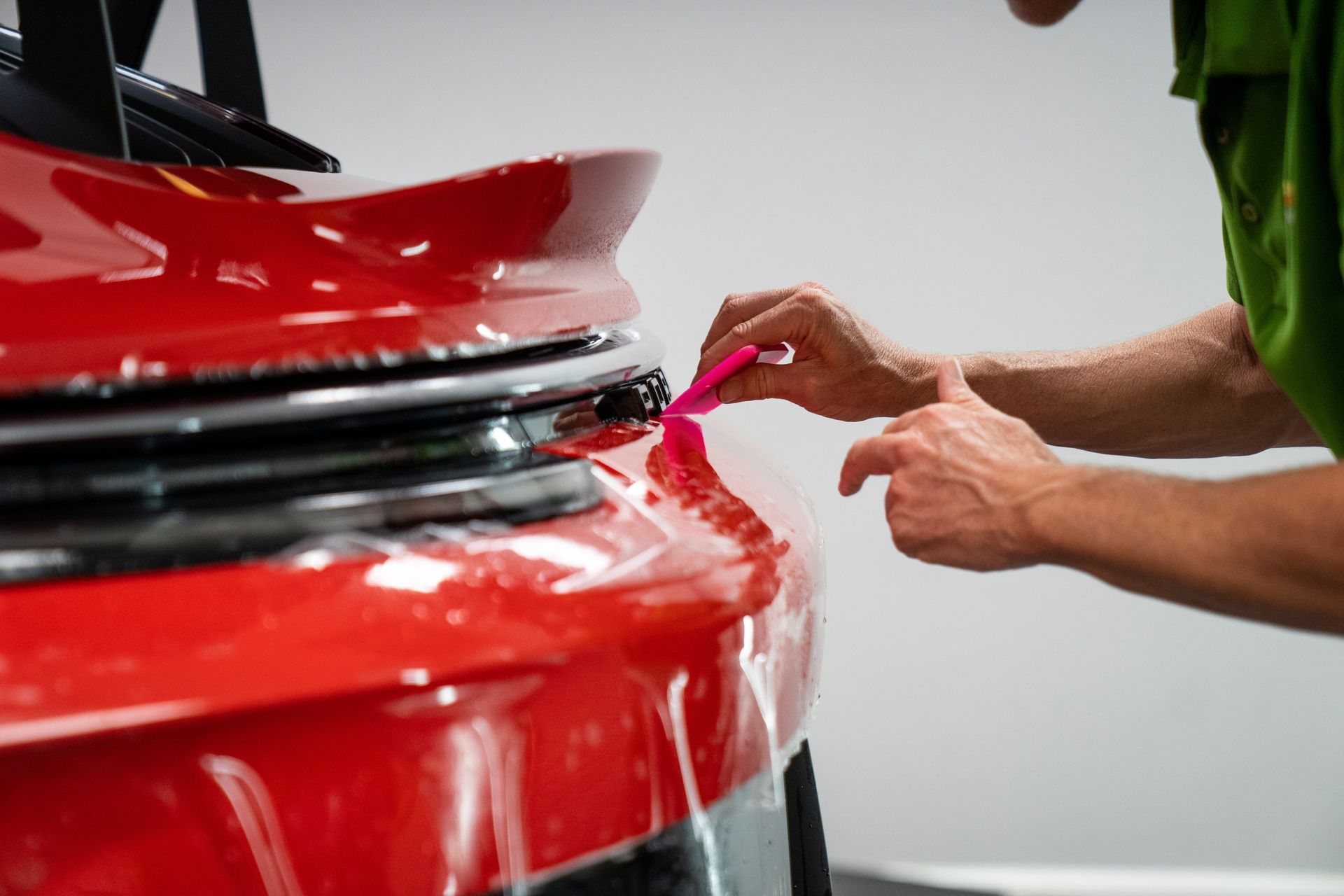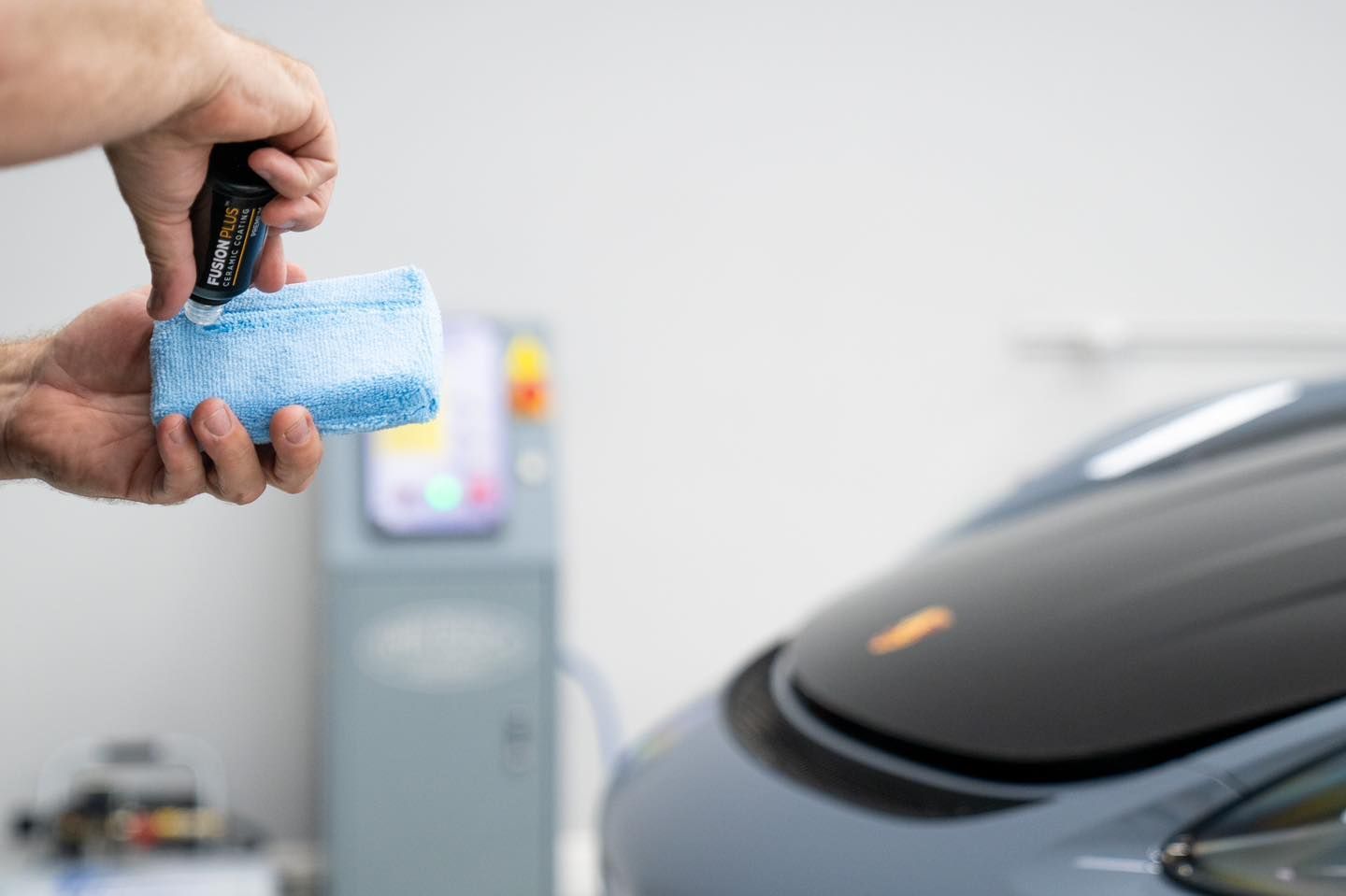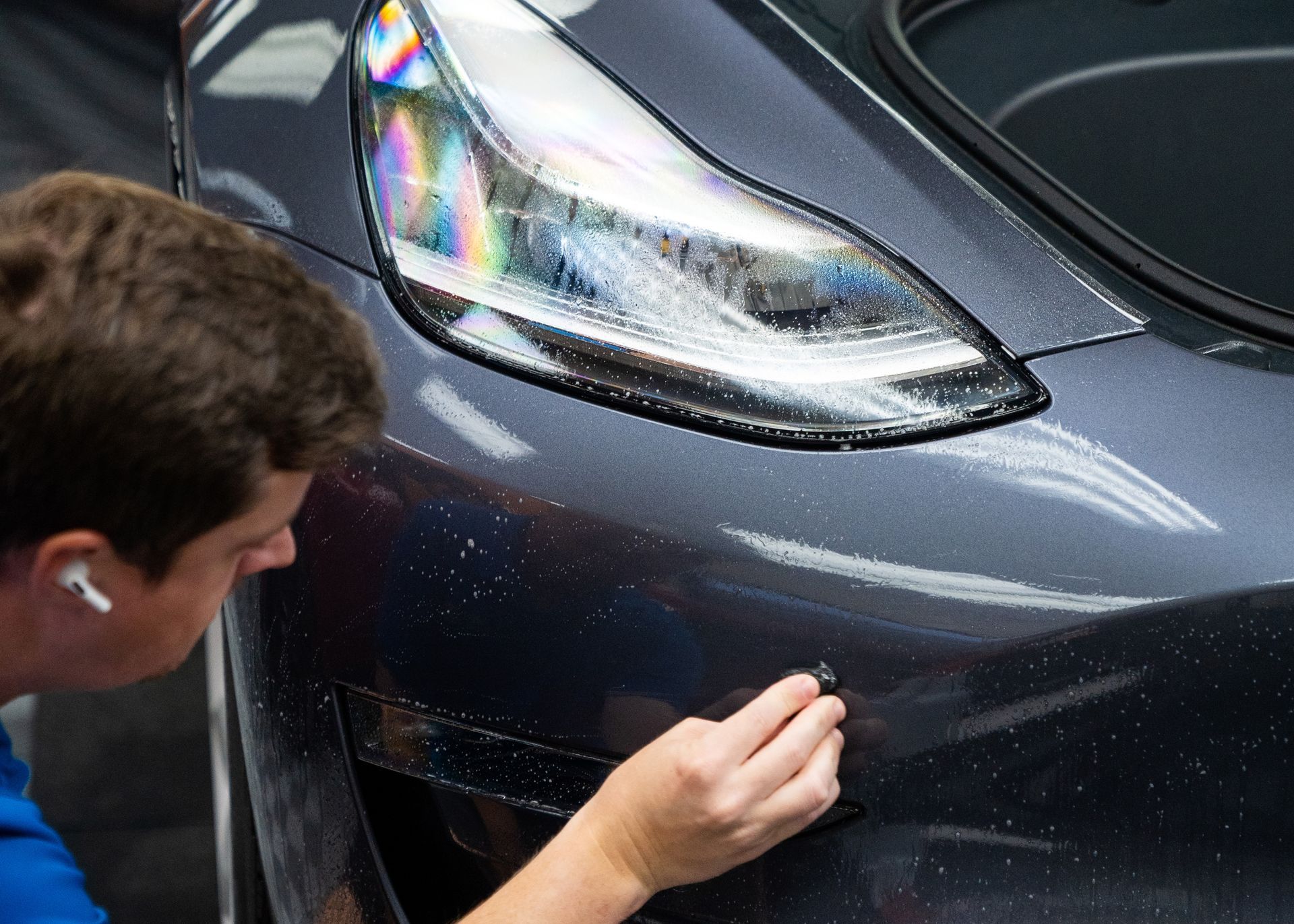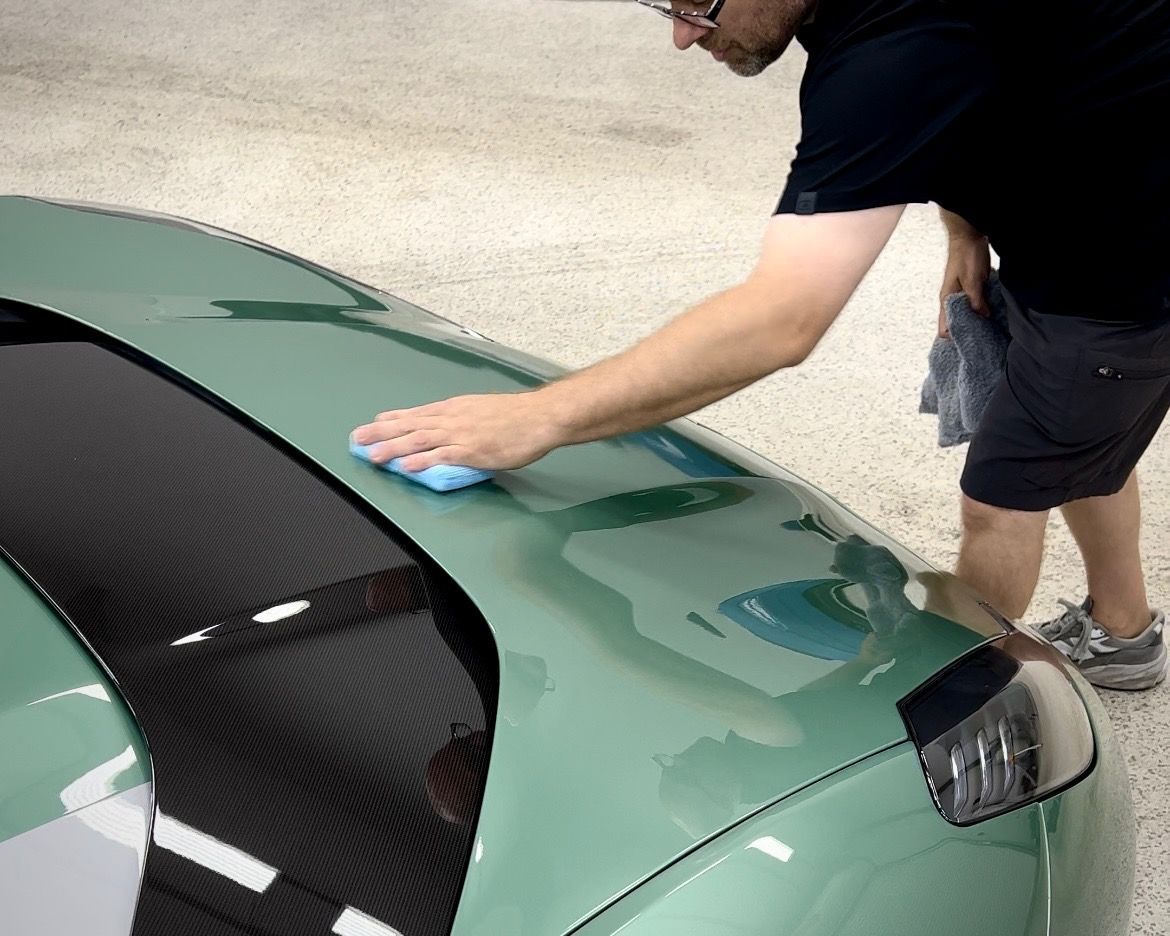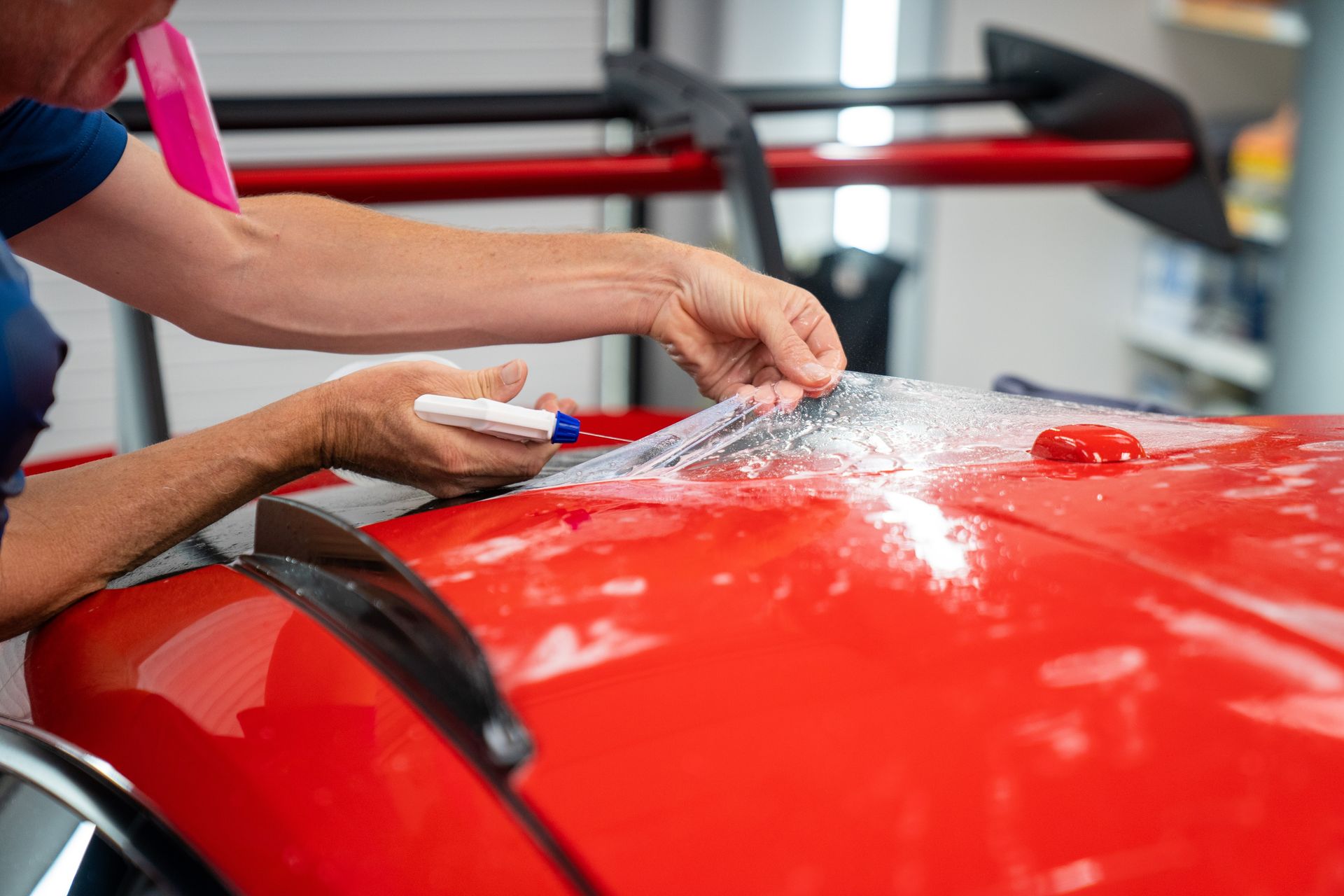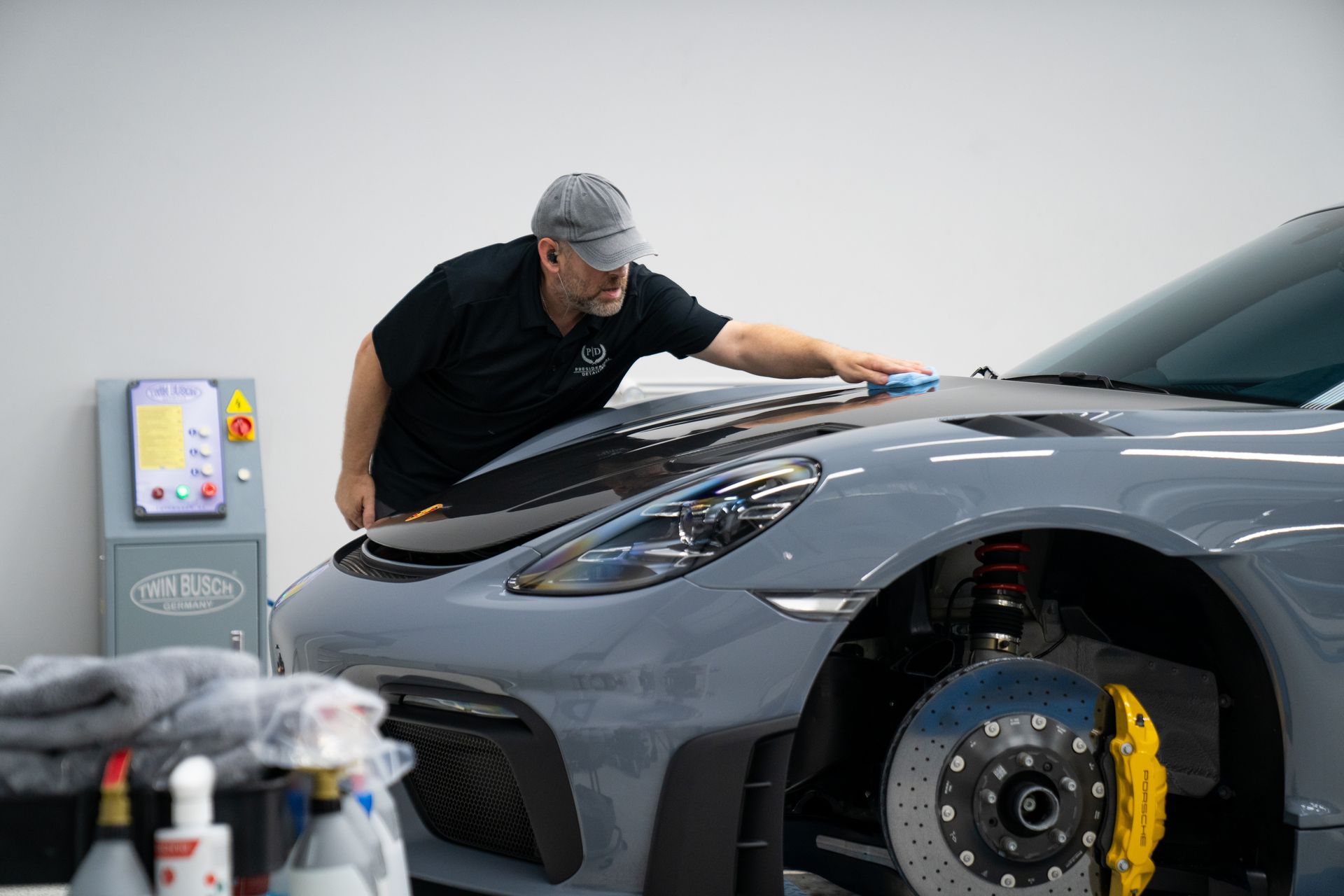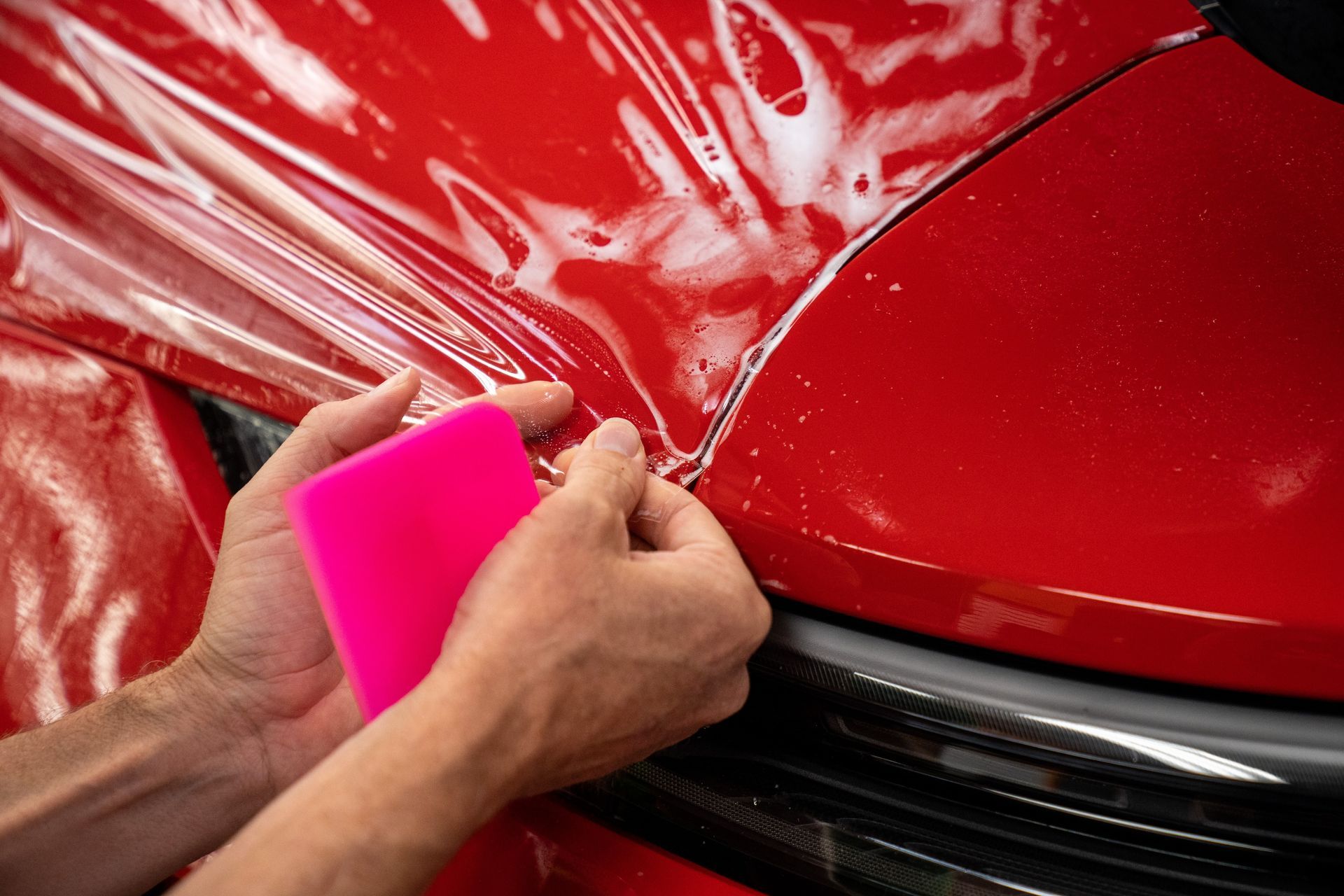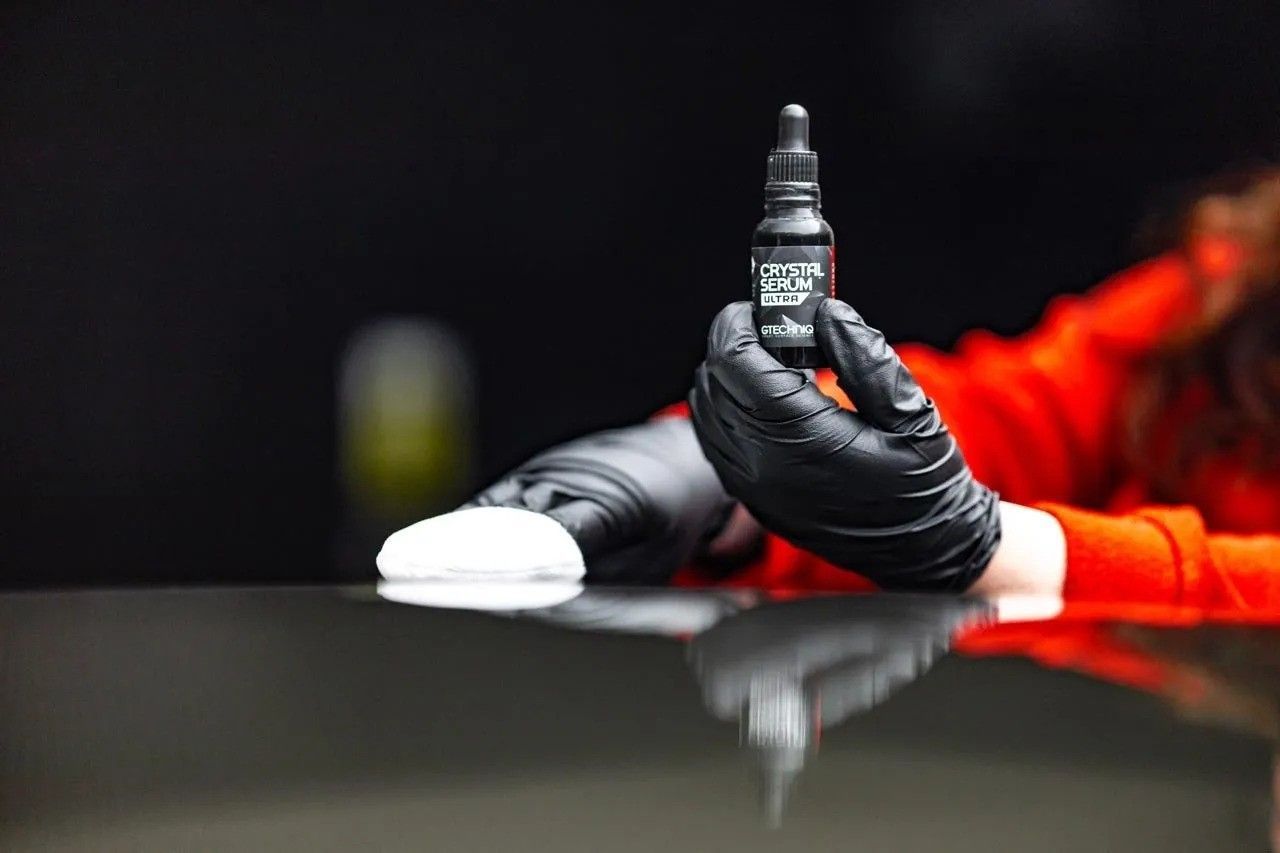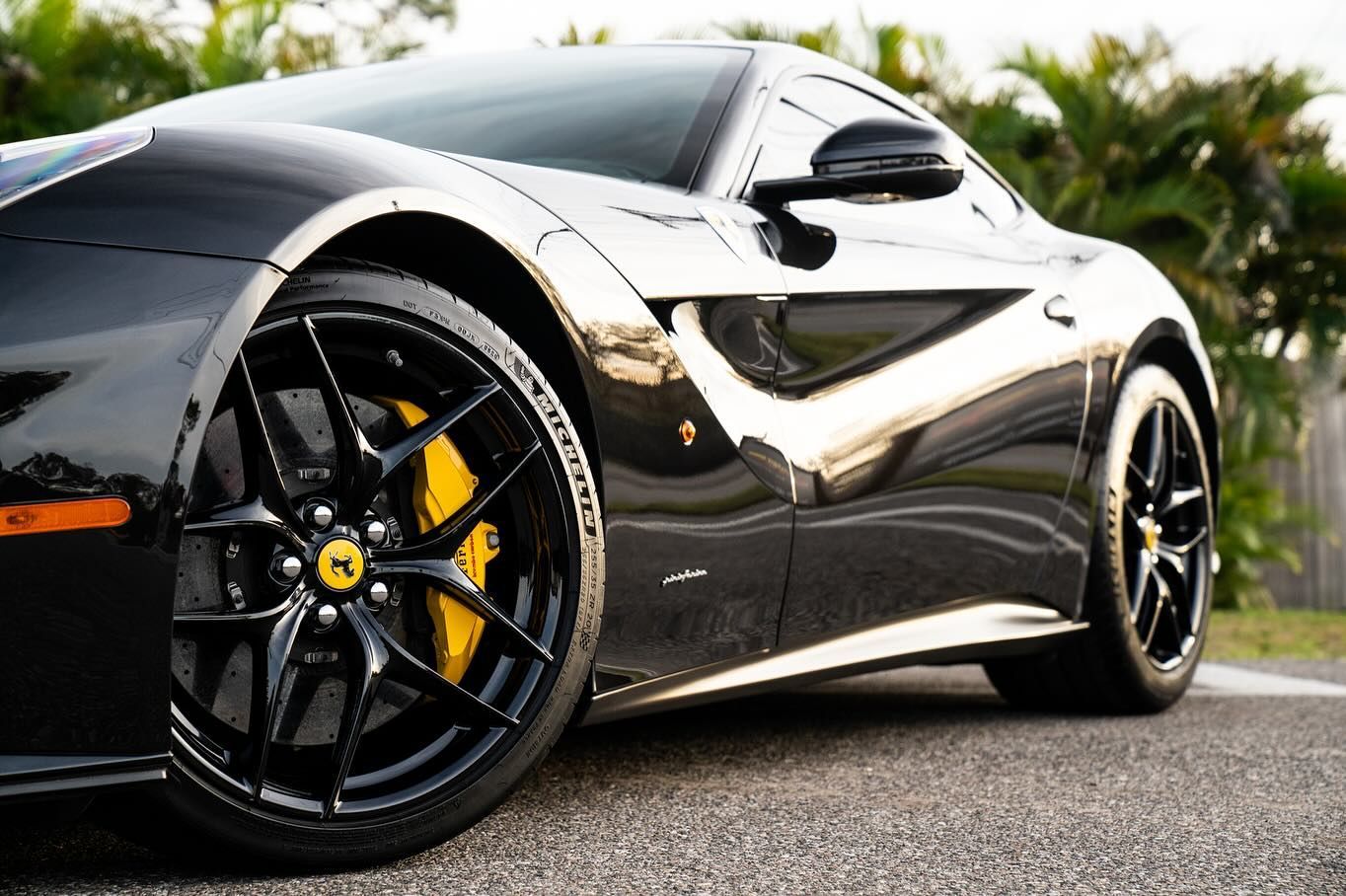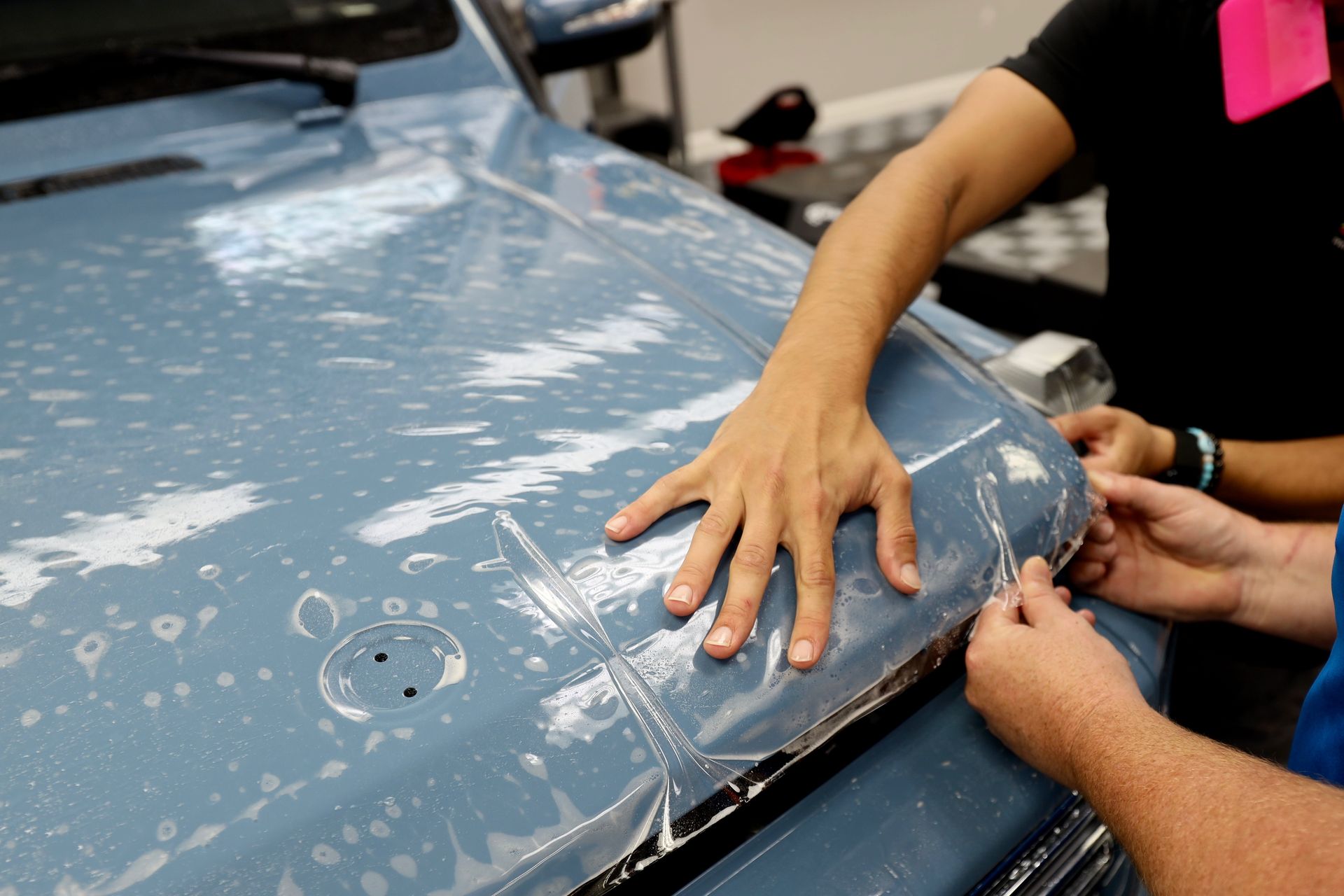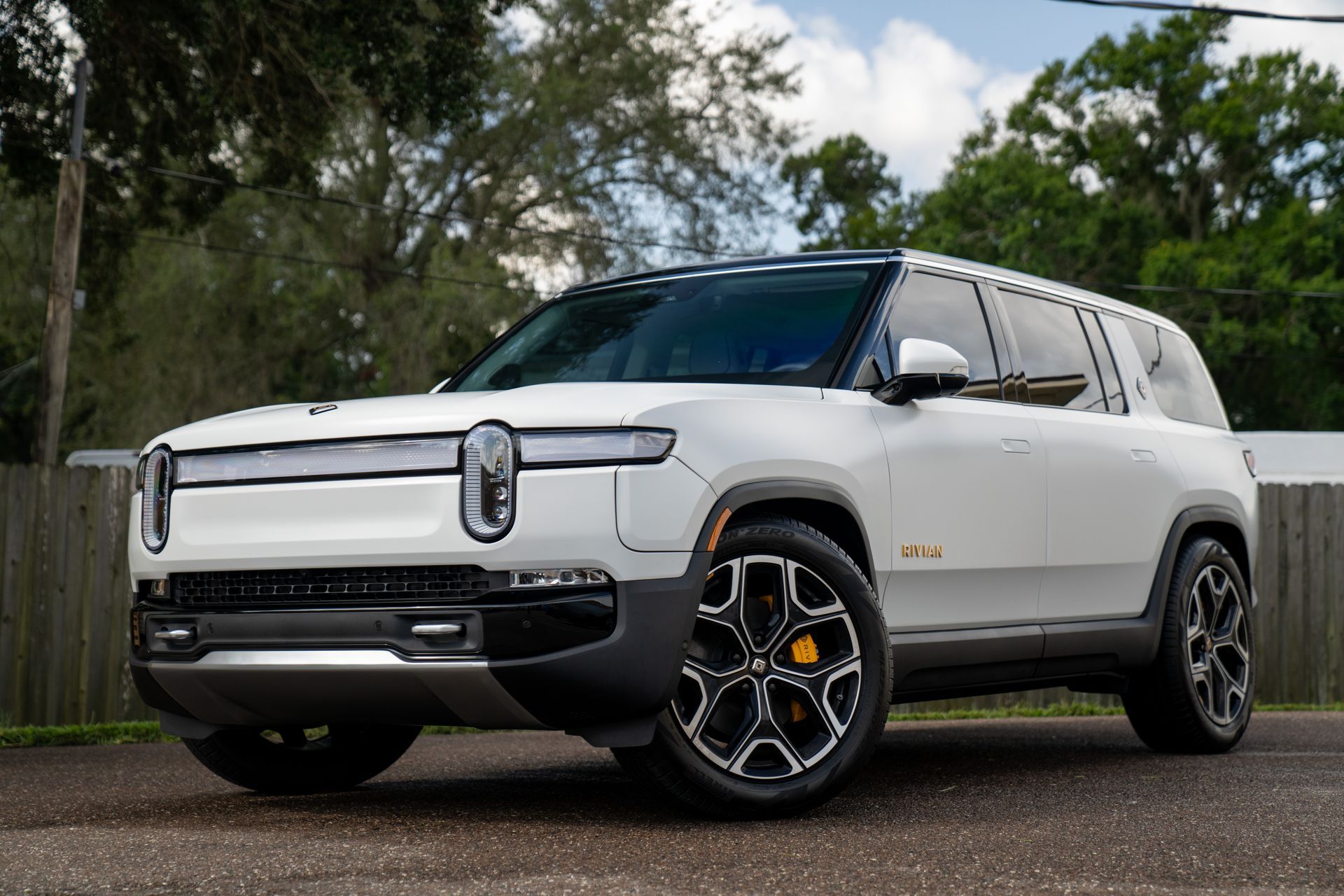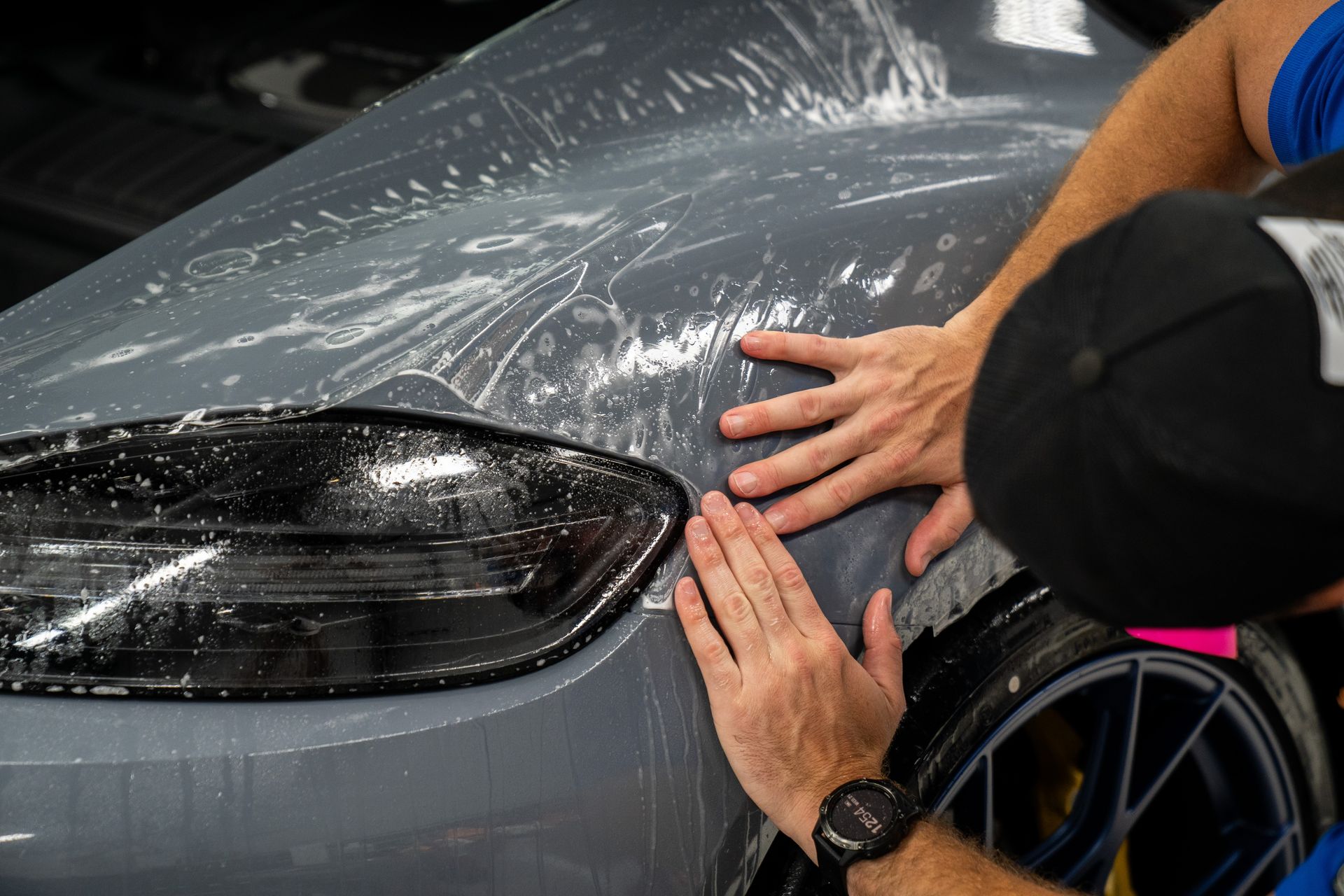Shielding Your Car: The Role of PPF in Preventing Chemical Damage
CALL (813) 723-9679
GET A FREE ESTIMATEWhen you think about protecting your car, what comes to mind? Maybe it's the usual concerns like scratches from flyaway debris or avoiding those pesky dings in the parking lot. But what if I told you there’s a hidden threat to your vehicle's paint—something often overlooked—that can cause damage just as serious? Chemical contaminants, like bird droppings and tree sap, can wreak havoc on your car's exterior, leading to unsightly stains and costly repairs. That’s where Paint Protection Film (PPF) steps in as a smart solution, acting like an invisible shield against nature's little surprises. In this article, we'll explore how PPF not only protects your car from chemical damage but also plays a vital role in keeping it looking pristine for years to come.
Paint Protection Film (PPF) serves as an effective barrier against harmful chemicals such as bird droppings, tree sap, and road salt, which can etch or stain the vehicle's paint. By creating an invisible shield over the surface, PPF not only prevents these substances from causing damage but also simplifies maintenance and helps preserve the car's exterior integrity.
What is Paint Protection Film (PPF)?
Paint Protection Film, commonly known as PPF, is a clear, ultra-thin layer that acts like a shield for your vehicle's exterior. This remarkable product is crafted from thermoplastic urethane, renowned for its durability and flexibility. Originally developed for military applications, specifically to protect helicopter blades, PPF has transitioned into a key accessory for automotive enthusiasts looking to preserve their vehicle’s aesthetics. The primary role of PPF is to safeguard your car's bodywork against physical threats such as scratches, rock chips, and minor abrasions. Imagine driving down a gravel road or navigating through an urban environment where street debris might fling up and nick your paint—this is where PPF truly shines. By absorbing impacts effectively, it keeps your car looking new longer.
Studies, including one by the Society of Automotive Engineers, highlight that vehicles equipped with PPF typically retain a higher resale value compared to those without it. This fact alone serves as a sound investment; protecting your car from wear and tear translates not only to aesthetic longevity but also to economic prudence when considering future sales. As an added advantage, the market has seen rapid advancements in this technology, with some brands now offering PPFs that feature self-healing properties. Under heat application or direct sunlight, minor scratches can disappear, maintaining your vehicle’s pristine look.
By utilizing PPF, you're effectively setting a barrier between your car's paint and external elements. Whether it’s road salt from winter weather or acidic bird droppings during spring months, PPF acts as a frontline defense mechanism. Its chemical resistance is particularly noteworthy; substances that could etch or stain unprotected paint simply can't penetrate this protective film. Recognizing these unique features equips you with the knowledge needed to enhance and maintain your vehicle's surface while understanding how to best combat the damaging effects of environmental factors.
Guarding Your Vehicle from Chemicals
One of the standout features of PPF is its ability to act as a robust barrier against harmful chemicals that often wreak havoc on a car's paint. Think about the last time you parked beneath a tree with sticky sap or dealt with the aftermath of bird droppings—both are common nuisances that can cause significant etching and discoloration to your vehicle’s exterior.
When these substances sit on the paint, they can gradually corrode it, leading to permanent damage if left untreated. PPF effectively prevents these chemicals from making contact with the surface, thereby preserving the integrity and aesthetic appeal of your car.
Each of these threats poses a unique risk to your vehicle. For example, bird droppings can start to etch into the paint within just a few hours thanks to their acidic nature. With PPF in place, however, you can simply wipe it off without worry. Similarly, tree sap can be a true annoyance—it sticks stubbornly and requires special solvents for removal. Yet, when protected by PPF, the sap doesn't have a chance to harden into an unyielding mess.
There's an ongoing debate about whether ceramic coatings can offer similar chemical protection. On one hand, these coatings seem appealing due to their glossiness and hydrophobic properties; however, many experts argue that while they may provide some level of protection, they lack the impact resistance inherent in PPF. This means that even if ceramic coatings defend against stains and minor scratches, they fall short in ensuring comprehensive shielding against harsher chemical interactions.
Recognizing how vital this protection is for maintaining your vehicle's appearance and value sets the stage for understanding how other factors contribute to overall car care. Let's explore how various protective solutions enhance both durability and visual appeal.
UV Shielding and Surface Gloss
When we think about taking care of our cars, we often associate protection with physical damage—like scratches or dings from road debris. However, extended exposure to sunlight poses a different yet equally damaging risk. The sun’s rays can lead to paint oxidation, discoloration, and fading over time. This is where Paint Protection Film (PPF) steps in, acting as a formidable shield against harmful ultraviolet rays. By installing PPF, you're investing in a protective barrier that helps to preserve your vehicle's rich color and immaculate finish. Imagine being able to park your car outside under intense sunlight without worrying about those harmful rays dulling its brilliance; that's a game changer. Research indicates that PPF can block up to 99% of UV rays, offering significant protection against these detrimental effects. This means less frequent touch-ups at the paint shop, translating into both time and cost savings.
Enhanced Gloss
But what's the purpose of protecting your car if it doesn’t look stunning? One splendid aspect of high-quality PPF is how it enhances your vehicle's gloss.
Take for instance, a premium paint protection film; its advanced makeup brings out an eye-catching shine reminiscent of a freshly waxed car. This improvement is not mere happenstance. According to reviews on platforms like Auto Express, many users have noted a marked difference in surface gloss—so much so that their vehicles appear more vibrant and polished than they did straight from the showroom.
- Gloss Rating: The gloss level achieved by PPF can reach upwards of 90+, significantly outperforming traditional wax coatings, which typically attain around 70-80.
- Longevity: Unlike wax that may wear off after a few months, PPF maintains its luster over years with proper maintenance.
As we can see, installing PPF isn’t simply about safeguarding your investment; it also plays a pivotal role in enhancing the aesthetic appeal of your vehicle while offering long-lasting protection from environmental factors. Transitioning our focus, let’s examine how this protective film compares to other options on the market.
PPF vs. Alternative Coatings
When it comes to vehicle protection, Paint Protection Film (PPF) stands out for its ability to shield a vehicle from physical damage while also preserving its aesthetic appeal. Ceramic coatings, while renowned for their hydrophobic properties, do not offer substantial protection against impacts, such as rock chips or abrasions. They repel water effectively and create a glossy finish that enhances the car's look, but they often fall short in safeguarding against the wear and tear from daily driving conditions.
On the other hand, vinyl wraps primarily serve an artistic purpose. They can dramatically change a vehicle’s appearance with vibrant colors or custom designs; however, their protective capabilities leave much to be desired. Vinyl wraps are prone to scratching and peeling over time and do not provide the robust defense offered by PPF. Think of it this way: you wouldn’t wear a thin cotton shirt to protect yourself from tough weather; you’d choose something sturdy and more resistant. That’s where PPF shines. Unlike vinyl wraps that can easily be damaged, PPF acts as a durable barrier against environmental contaminants and physical threats while maintaining the underlying paint pristine.
Users who have made the switch from ceramic coatings to full PPF installations often report significant improvements in how their vehicles withstand the rigors of daily use. For example, on the Tesla Motors Club forum, one member observed fewer signs of wear on their car after opting for PPF over a ceramic coating. Moreover, when you consider long-term investment, Icon Rocklear emerges as an intriguing alternative within this landscape as well. Positioned as a superior option in today’s market, it boasts remarkable strength—75 times stronger than traditional coatings and 35 times thicker—along with self-healing capabilities, ensuring any minor scratches disappear almost magically over time.
When weighing these options, it's clear that if you're prioritizing genuine durability and long-lasting protection for your vehicle, Paint Protection Film or advanced alternatives like Icon Rocklear present themselves as essential components of proactive car care. Now that we’ve explored the importance of protective coatings, let’s shift our focus to what goes into applying these innovative solutions effectively.
Installation Techniques
First and foremost, preparing the surface is the cornerstone of any successful PPF application. Imagine applying a bandage on dirty skin; dirt will not allow it to heal properly, right? Similarly, the vehicle’s surface must be meticulously cleaned and dried before installation. This means giving your car a thorough wash, ensuring that no contaminants—like dust, grease, or wax—remain on its surface. Professional installers often use specialized cleaning agents to eliminate residues that traditional soaps might miss. Taking this step seriously helps prevent air bubbles and imperfections after the film is placed.
After a clean slate has been established, we can move on to applying the film. When applying the film, professionals utilize a slip solution, which is a mixture of water and a small amount of soap. This concoction allows for repositionability during the installation process. Think of it like applying lotion before putting on a tight-fitting glove; it makes everything easier! The installer carefully lays down the film, adjusting its position as necessary to achieve optimal coverage. Here’s where the use of squeegees comes into play. With gentle strokes, they extract any air bubbles trapped beneath the film while simultaneously ensuring that it adheres smoothly to the contours of the vehicle's shape.
But we aren't quite finished yet—curing time is vital for long-lasting results. After applying the PPF, allowing adequate curing time is essential for proper adhesion. Depending on environmental conditions such as humidity and temperature, this phase can take several days. During this period, it's important to keep your car dry and avoid washing it. Think about curing time like letting paint dry: if you mess with it too soon, you're likely to ruin all your hard work! A good tip here is to park your vehicle in a shaded area or garage during these first few days, helping the film settle without disruptions.
Data from a Consumer Reports survey indicates that 85% of users who opted for professional installation reported fewer defects and longer-lasting results compared to DIY applications. Isn’t it reassuring? It underscores how crucial skilled installation is to reap the long-term benefits of PPF in protecting your vehicle from chemical damage and wear over time. As we consider the impact of skilled application on preserving your vehicle's integrity, it's equally important to examine what advantages come from choosing PPF as a protective measure over time.
Long-term Advantages
The long-term benefits of PPF resonate deeply with car owners looking for ways to protect their investment. Over time, one of the most significant advantages is how much resale value can be preserved. Cars equipped with well-maintained PPF often command higher prices when it comes time to sell or trade them in, as potential buyers appreciate the vehicle's maintained appearance and reduced wear and tear. It's akin to how a well-cared-for house retains its charm—excellent upkeep leads to good offers.
Moreover, PPF dramatically reduces repair costs associated with minor damages. With its protective layer absorbing impacts from road debris, chips, and scratches, car owners can find themselves visiting the body shop far less frequently. Repair bills typically range from $500 to $2,000 for paint-related damage and can accumulate quickly without protection. By combining financial wisdom with proactive maintenance through PPF, you save yourself unnecessary strain on your budget over time.
A significant benefit that often gets overshadowed is the peace of mind it provides. Knowing your vehicle is safeguarded against everyday risks—from pesky bird droppings to tree sap—can transform your driving experience. You’ll no longer have that nagging worry each time you park under a tree or cruise down a gravel road; every trip becomes a little more relaxing when you're confident that your investment is shielded from harm.
Therefore, for anyone who cares about their vehicle not just in the moment but throughout its life cycle, investing in PPF emerges as a sturdy choice aligned with long-term vehicle care and maintenance. Realizing these benefits empowers car owners to take better care of their treasured vehicles while enjoying peace of mind knowing they made a smart decision for future gains. Ultimately, investing in PPF is not just about immediate protection—it's about safeguarding your vehicle’s future value and ensuring an enjoyable ownership experience throughout its life.
Top Paint Protection Film in Tampa, FL
Presidential Automotive Detailing in Tampa, FL, offers exceptional paint protection film services to keep your vehicle’s paint pristine. Our high-quality film provides an invisible shield against road debris, scratches, and environmental damage, preserving your car’s flawless finish. Whether you're protecting a daily driver or a prized possession, our expert installation ensures your vehicle stays in top condition. Don't wait until the damage is done—contact us today to safeguard your investment!
